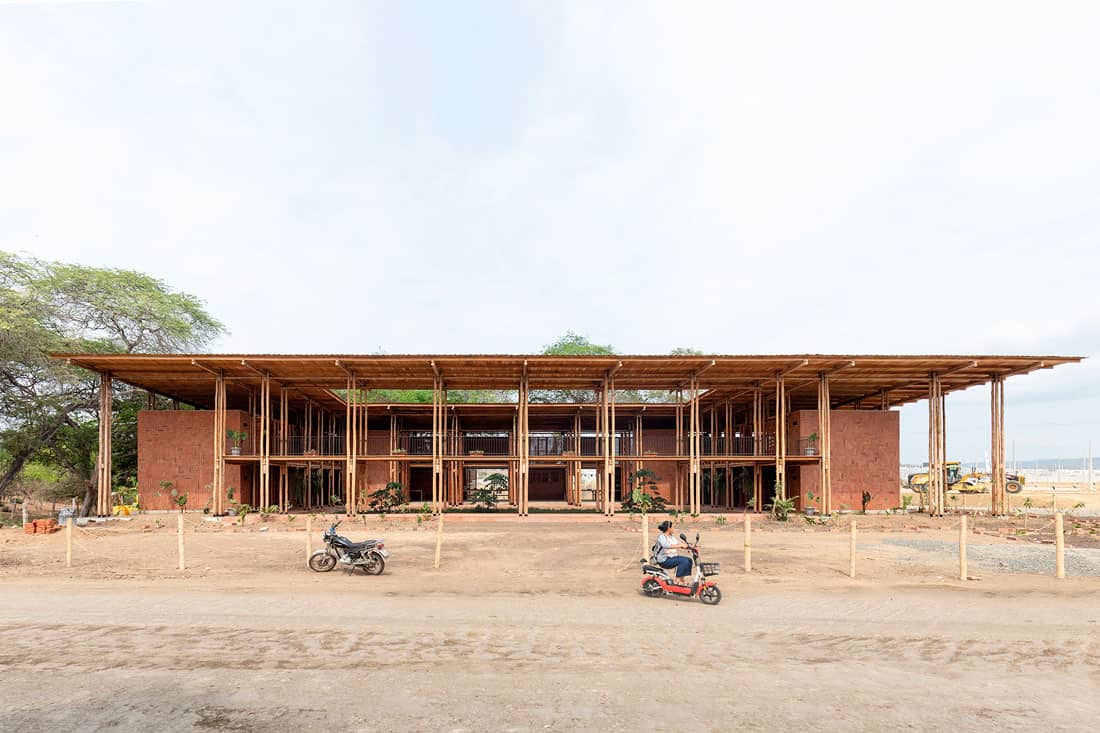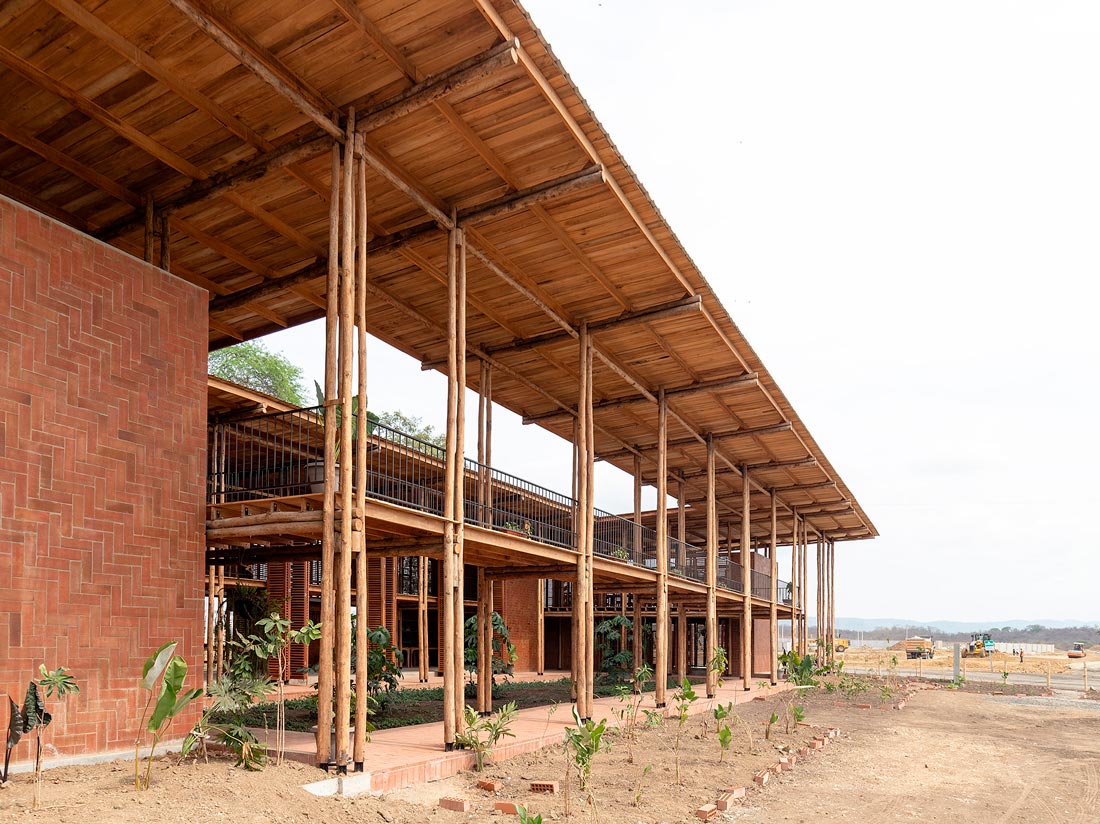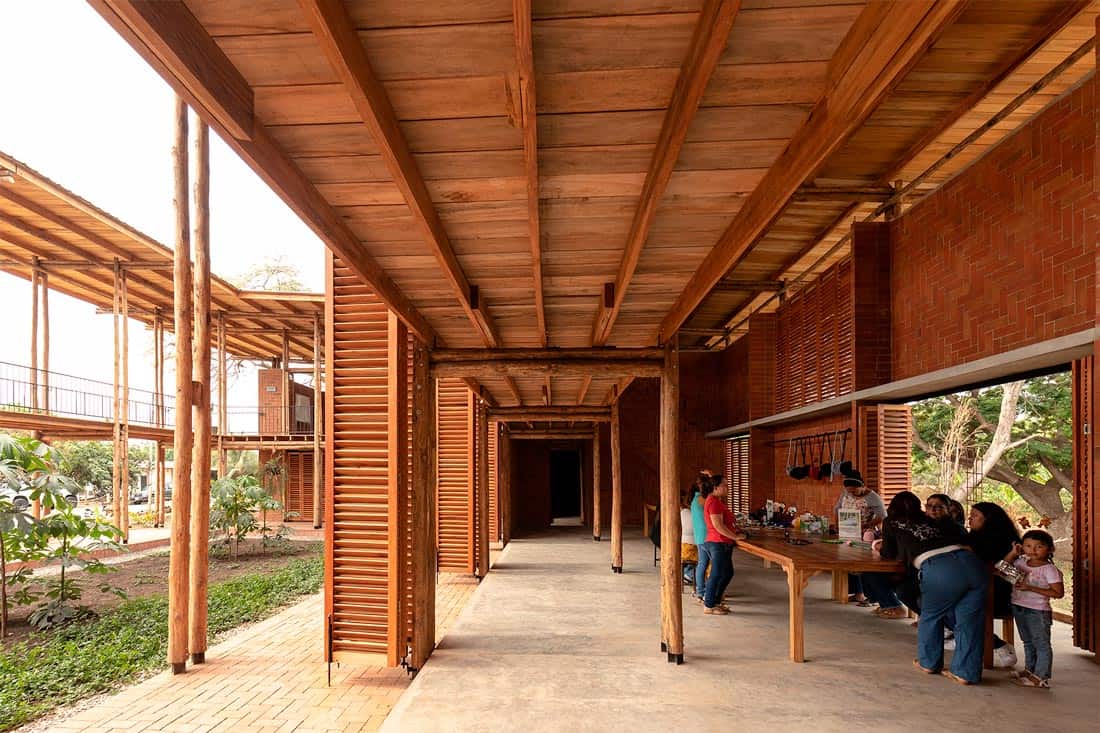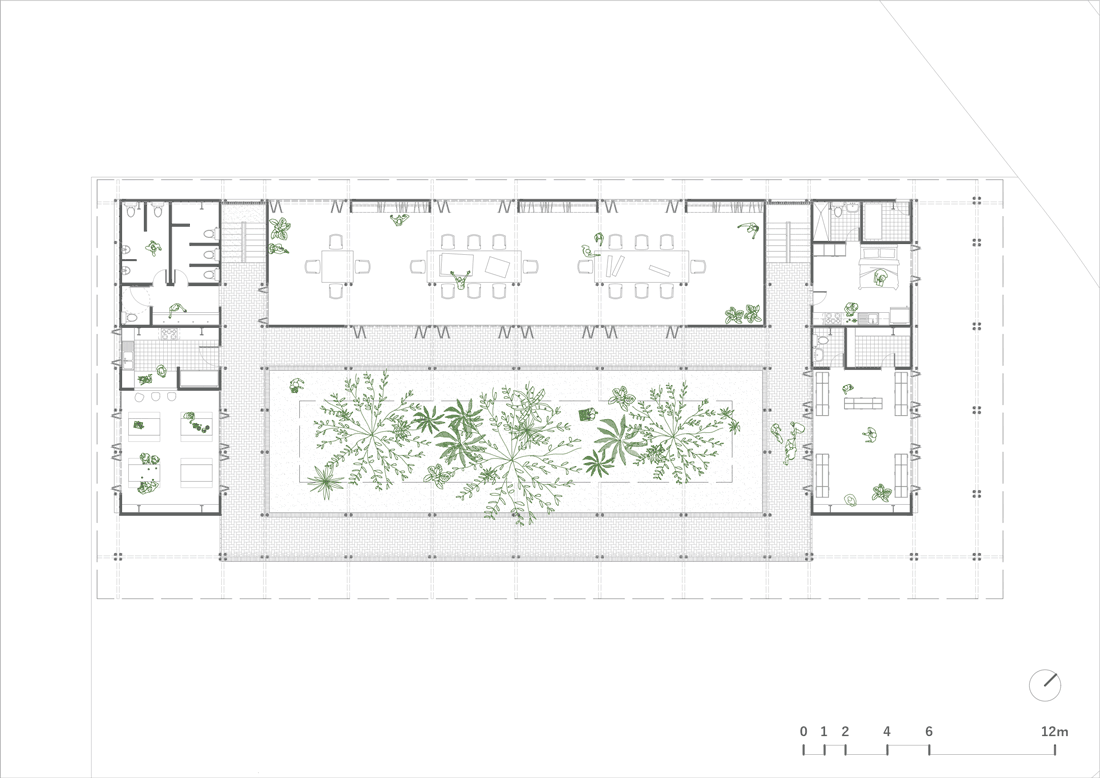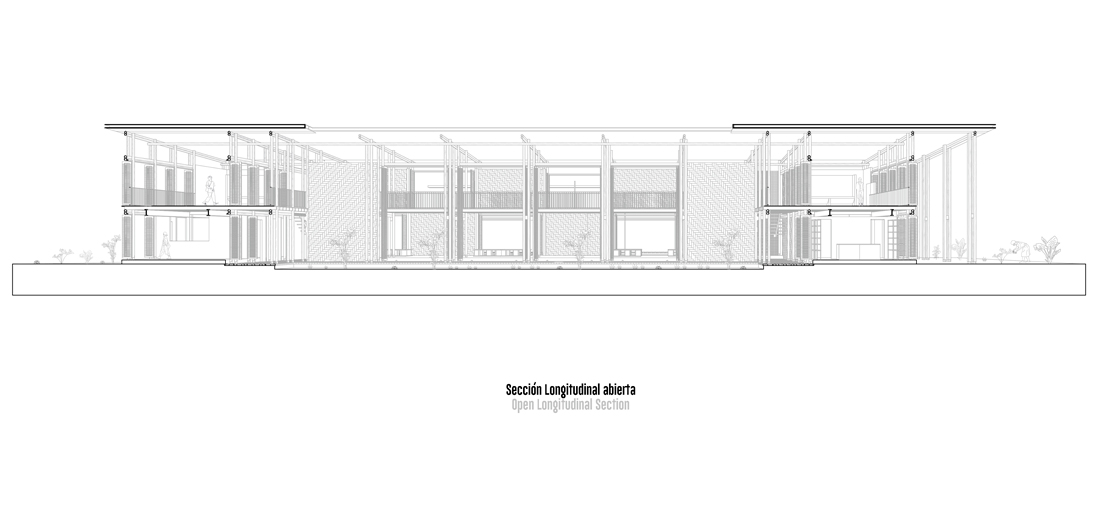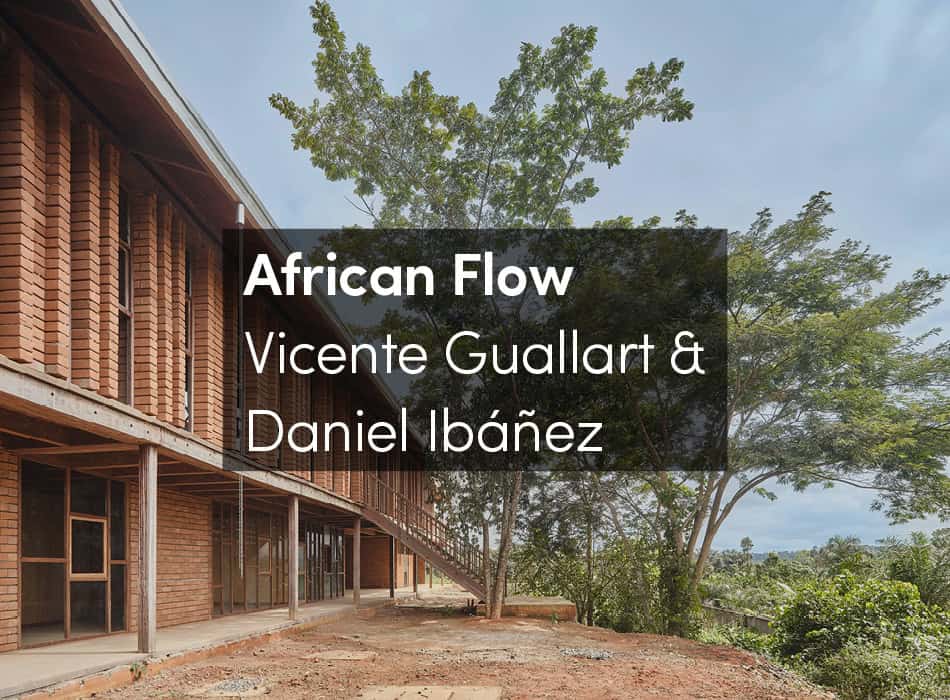“Las Tejedoras” is located on the outskirts of the urban community of Chongón, Ecuador, with a population of approximately 4,900 people. The majority are women who do not participate in the formal economy, with little possibility of entering the labor force. In this context, the Young Living Foundation is dedicated to generating programs that promote the potential of communities through education and entrepreneurship.
In 2009, it opened the Young Living Academy to provide education for around 150 low-income children whose mothers are part of the local productive workshops. In tandem, the organization for craftswomen Las Bromelias was formed, focused on development through handmade fabrics with natural fibers. Over time, the number of members in the group grew steadily, which led to the need for a new space.
The design and construction of the project was carried out through the transdisciplinary work of the Young Living Foundation, Las Bromelias, Natura Futura and Juan Carlos Bamba, with the main objective of generating a productive center for learning, integration-exchange and sale of artisan handicrafts. The construction process was harnessed as a tool for training and employment: several construction workshops were held with the community and family of Academy members, in order to impart skills to help reinforce local and environmental development.
A patio planted with native vegetation serves as a meeting and exhibition space that is surrounded by one volume on each side and one in the center. One of the side wings is used for theoretical training classrooms, a cafeteria and restrooms; the other is dedicated to practical learning workshops, sleeping spaces, a storage area, and a store to sell the products produced in the central volume, where the artisan fabrics are made. Along main façade is a gallery for production/exhibition that serves as a filter toward the patio and generates a more urban quality facing the street. The rear façade is closed off to offer greater security.
Round teak poles are used in the main structure, supporting the roof and the floor on the upper level; this material is commonly used for the base supports of stilt houses in vulnerable areas of the region due to its hardness and durability. The brick walls are built using the herringbone weave method and reinforced by the form of the interlocking walls. Wooden folding lattice doors control ventilation, lighting and the connection between the exterior and interior.
Las Tejedoras is intended as a space for intermediation in productive development processes, connecting unemployed women through active participation, promoting local craftmanship, and harnessing education as a tool for empowerment.





